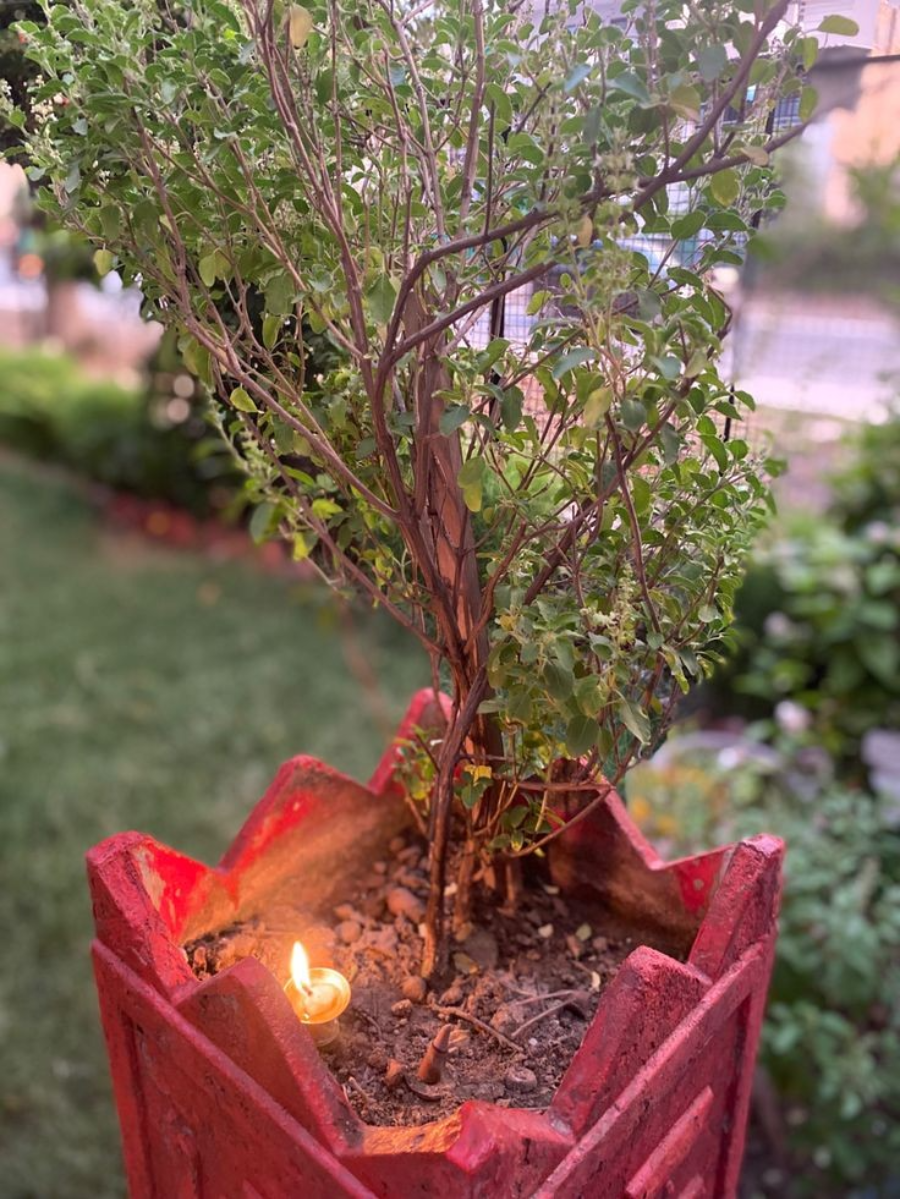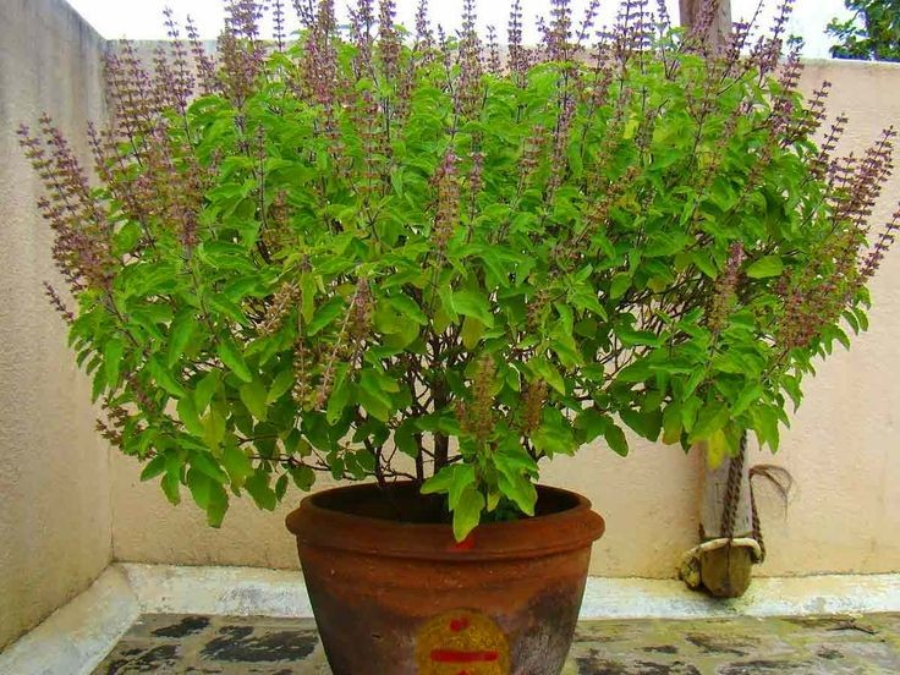

In Hindu culture and traditional medicine, the tulsi plant—also called holy basil (Ocimum sanctum)—is highly esteemed. It is a sign of resilience, health, and spirituality because of its aromatic leaves and lengthy history. The tulsi plant's journey starts in the center of India, where it has been grown for hundreds of years and is associated with therapeutic techniques, rituals, and beliefs.

Historical Significance
The plant known as "the queen of herbs" is revered in Hinduism and is a sacred plant. It is thought to be an expression of the goddess Tulsi, who stands for dedication and purity. The plant represents the enduring relationship between Lord Vishnu and his companion Tulsi in Hindu mythology. In India, tulsi is customarily planted in pots or gardens in every home, serving as a daily reminder of devotion and spirituality.
Tulsi is praised for its therapeutic qualities in ancient writings. The plant's advantages in fostering health and wellbeing are highlighted by the more than 5,000-year-old Ayurvedic medical system. As a potent adaptogen, tulsi aids in the body's ability to adjust to stress and preserve equilibrium. Its reputation as a medicinal herb stems from its abundance of vitamins, essential oils, and antioxidants.
Medicinal Properties
Many traditional claims about tulsi have started to be validated by modern science. Numerous health advantages have been linked to its ingestion by research. It is well recognized that tulsi leaves have antiviral, antibacterial, and anti-inflammatory qualities. The immune system can be strengthened by regular use of tulsi tea or its extracts, which makes it especially useful in preventing seasonal infections.
Additionally, tulsi helps reduce worry and stress. Compounds in the leaves support emotional stability and mental clarity. Tulsi tea is a popular natural cure for relaxation and stress reduction. It is also thought to improve cardiovascular health, aid control blood sugar levels, and promote respiratory health.
Cultivation and Care
Tulsi is accessible to homes and communities because to its ease of cultivation. Well-drained soil and warm, sunny weather are ideal for the plant's growth. It frequently thrives in domestic settings and can be cultivated in pots or straight in the garden. Frequent irrigation and sporadic trimming promote robust development and a profusion of foliage. 
The tulsi plant is an essential part of daily rituals in many Indian homes, in addition to being a source of herbal treatments. In order to strengthen the tulsi plant's position as a supernatural presence in their life, families frequently assemble around it for prayers and offerings.
Modern Relevance
The tulsi plant is still useful in today's hectic environment since it connects traditional customs with modern wellness methods. Interest in tulsi has increased due to the popularity of herbal medicine and the growing demand for natural solutions. Today, it is readily accessible in a variety of forms, such as teas, capsules, and essential oils, to meet the needs of a contemporary audience looking for all-encompassing health remedies.
A reminder of the wisdom ingrained in customs is provided by the tulsi plant. It inspires us to prioritize our well-being, embrace simplicity, and reestablish a connection with nature. In addition to honoring our cultural legacy, we are also making an investment in the wellbeing of our world and ourselves as we grow and value this sacred herb.
Conclusion
More than just a herb, the tulsi plant is a symbol of the interaction of spirituality, culture, and health. Its significance in our lives is highlighted by its journey from antiquity to the present. We honor a rich history and benefit from this amazing plant by integrating tulsi into our everyday activities. We participate in a practice that fosters peace, health, and a sense of connection to the planet, whether it is through the simple act of caring for the plant or enjoying a calming cup of tulsi tea.
